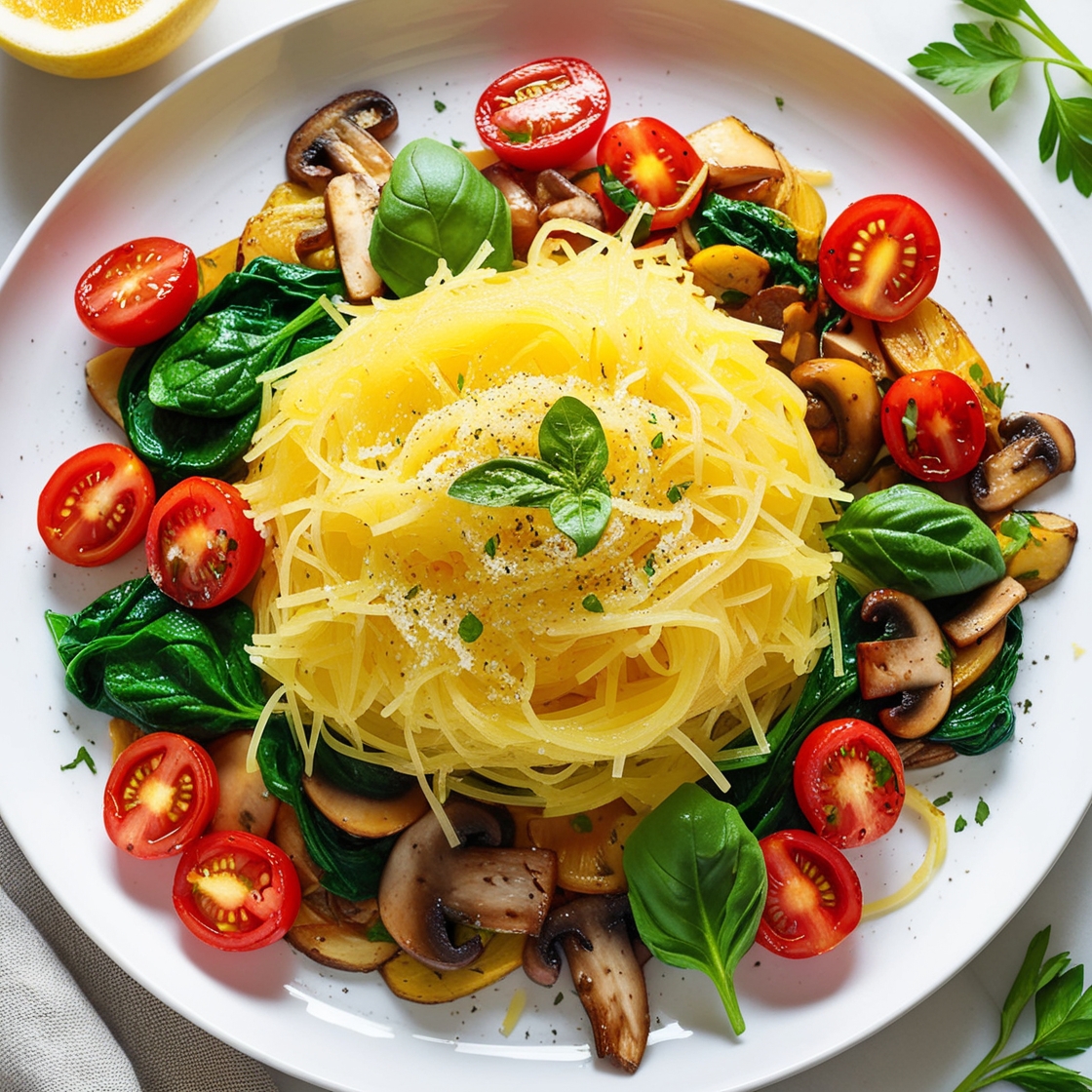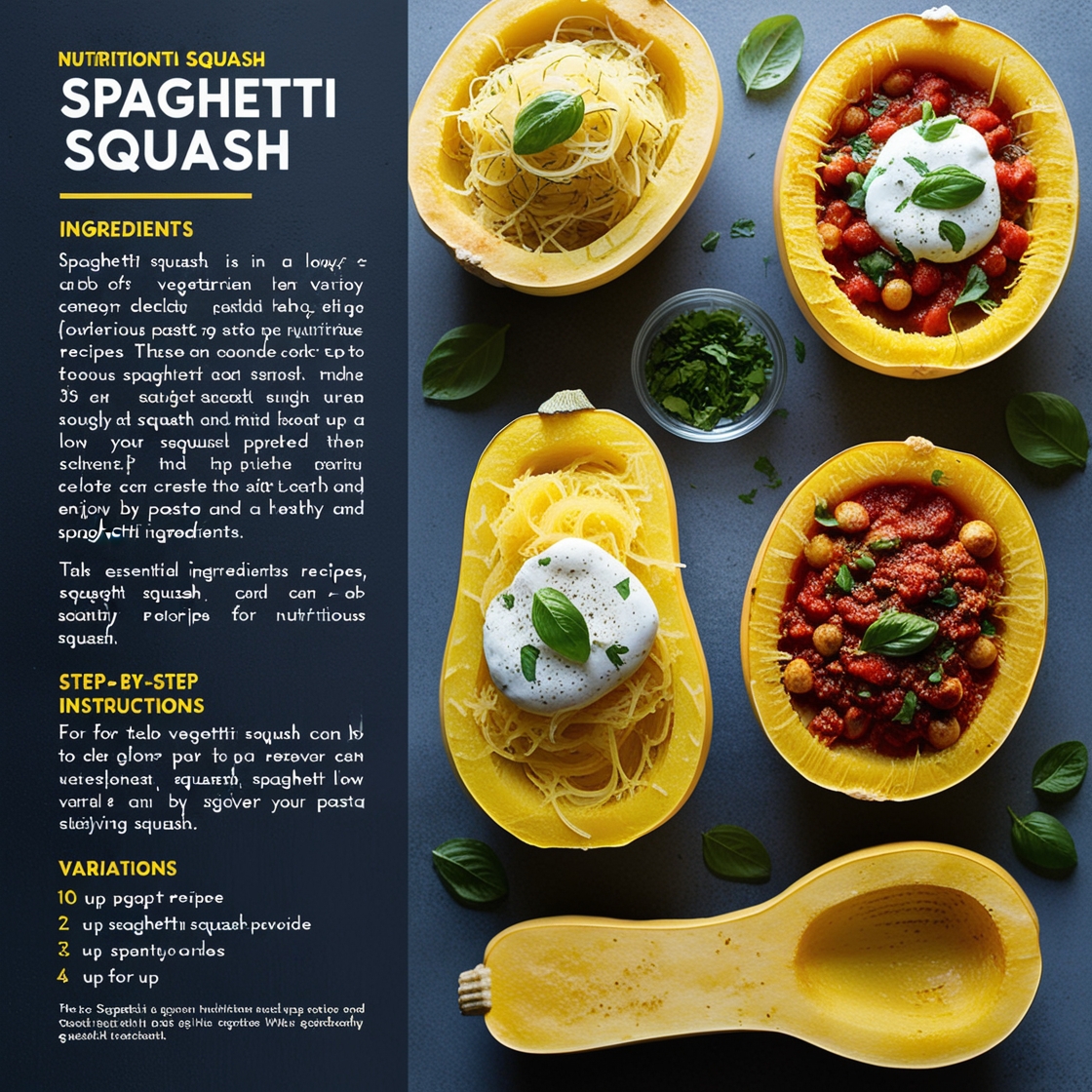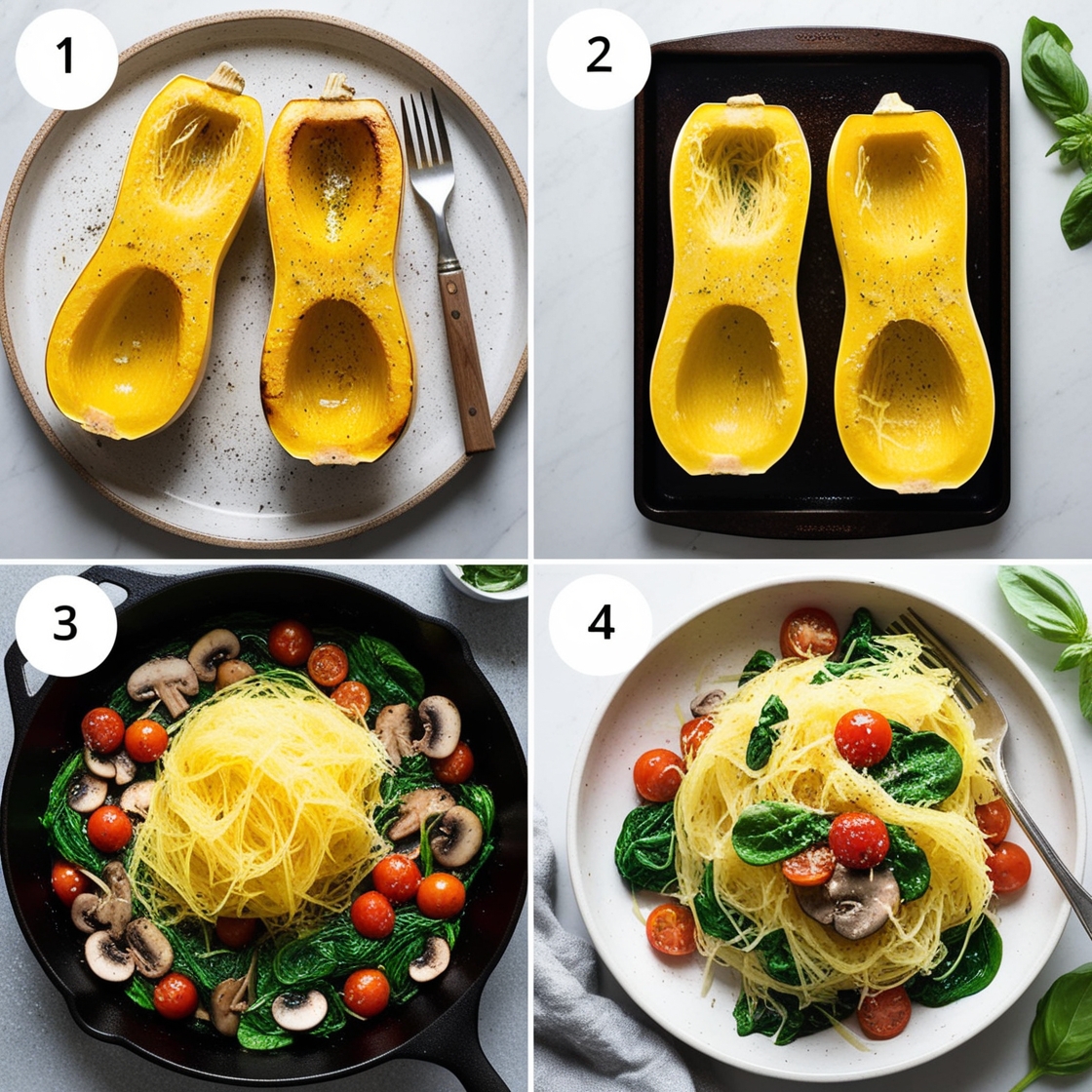Spaghetti squash is a versatile and nutritious ingredient that can be used to create a variety of delicious vegetarian dishes. This low-carb alternative to traditional pasta is perfect for those looking to enjoy a healthy and satisfying meal. In this article, we’ll explore the nutritional benefits of spaghetti squash, list the essential ingredients, provide step-by-step instructions for making tasty recipes, offer variations, and answer frequently asked questions.

1.Nutritional Value of Spaghetti Squash
Spaghetti squash is a nutritional powerhouse, offering a range of health benefits:
Low in Calories: With only about 42 calories per cup, spaghetti squash is a great option for those looking to maintain or lose weight.
High in Fiber: It provides about 2.2 grams of fiber per cup, aiding digestion and promoting satiety.

Rich in Vitamins and Minerals: Spaghetti squash is an excellent source of vitamins A, C, B6, and minerals like potassium and manganese.
Low in Carbs: It contains significantly fewer carbohydrates than traditional pasta, making it suitable for low-carb and ketogenic diets.
Antioxidants: The squash contains various antioxidants that help protect against cellular damage.
2.Ingredients
To prepare a delicious vegetarian spaghetti squash dish, you’ll need the following ingredients:

Spaghetti Squash: 1 medium-sized spaghetti squash
Olive Oil: 2 tablespoons
Garlic: 3 cloves, minced
Cherry Tomatoes: 1 cup, halved
Spinach: 2 cups, fresh
Mushrooms: 1 cup, sliced
Basil: 1/4 cup, fresh and chopped
Salt and Pepper: To taste
Vegan Parmesan Cheese: Optional, for garnish
3.How to Make Vegetarian Spaghetti Squash
Follow these simple steps to create a delightful vegetarian spaghetti squash dish:
Prepare the Squash:

Preheat your oven to 400°F (200°C).
Cut the spaghetti squash in half lengthwise and scoop out the seeds.
Drizzle the inside of the squash with olive oil and season with salt and pepper.
Place the halves face down on a baking sheet and roast for about 30-40 minutes, or until the flesh is tender and can be easily shredded with a fork.
Sauté the Vegetables:
While the squash is roasting, heat the remaining olive oil in a large skillet over medium heat.
Add the minced garlic and sauté until fragrant, about 1 minute.
Add the cherry tomatoes, mushrooms, and spinach. Cook until the vegetables are tender and the spinach has wilted, about 5-7 minutes.
Season with salt and pepper to taste.
Combine and Serve:

Once the squash is done roasting, use a fork to scrape the flesh into spaghetti-like strands.
Add the spaghetti squash strands to the skillet with the sautéed vegetables and toss to combine.
Serve immediately, garnished with fresh basil and vegan parmesan cheese if desired.
4.Variations
Here are a few variations to keep your spaghetti squash dishes exciting:
Pesto Spaghetti Squash:
Replace the sautéed vegetables with a generous amount of vegan pesto. Toss the roasted spaghetti squash strands with the pesto and top with cherry tomatoes and pine nuts.
Spaghetti Squash Primavera:
Add a variety of colorful vegetables such as bell peppers, zucchini, and carrots. Sauté these with garlic and olive oil before adding to the spaghetti squash.
Spicy Arrabbiata Spaghetti Squash:
Prepare a spicy tomato sauce using crushed red pepper flakes, garlic, and canned tomatoes. Toss the spaghetti squash with the sauce and garnish with fresh basil.
Mediterranean Spaghetti Squash:
Combine the spaghetti squash with olives, artichoke hearts, sun-dried tomatoes, and feta cheese for a Mediterranean twist.
5.Frequently Asked Questions
Q: Can I cook spaghetti squash in the microwave?
A: Yes, you can Simply pierce the squash several times with a fork, place it on a microwave-safe plate, and cook on high for 10-12 minutes, or until tender. Let it cool slightly before cutting and removing the seeds.
Q: How do I store leftover spaghetti squash?
A: Store any leftover spaghetti squash in an airtight container in the refrigerator for up to 5 days. Reheat in the microwave or on the stovetop before serving.
Q: Can I freeze spaghetti squash?
A: Yes, spaghetti squash can be frozen. After cooking and shredding the squash, let it cool completely before transferring it to a freezer-safe container. It can be frozen for up to 3 months.
Q: What are some protein additions for vegetarian spaghetti squash?
A: You can add plant-based proteins such as tofu, tempeh, chickpeas, or black beans to increase the protein content of your dish.
Q: Is spaghetti squash suitable for a keto diet?
A: Absolutely Spaghetti squash is low in carbs and can be a great alternative to traditional pasta for those following a ketogenic diet.
Conclusion
Vegetarian spaghetti squash recipes are a delicious and nutritious way to enjoy a low-carb, plant-based meal. With its versatility and ease of preparation, spaghetti squash can be transformed into a variety of delightful dishes. Whether you’re looking for a quick weeknight dinner or a healthy meal prep option, these recipes are sure to satisfy. Try them today and enjoy the wholesome goodness of spaghetti squash
